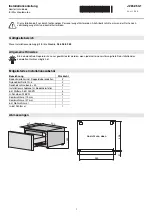
Appendices
UV Measurement Techniques
The following sections emphasise the pitfalls that may be encountered
when using broadband sensors for environmental monitoring, and for
situations where the characteristic quality of the UV light may vary.
Please contact Delta-T if you need further guidance.
Environmental Monitoring Note (UV-AN 1.1)
Ozone depletion in the stratosphere caused by CFCs and other chemicals
has raised the monitoring of solar ultraviolet radiation (UVR) to a new
level of importance in environmental research. This note discusses the
appropriate use of UV Sensors type UV3p
in this research.
Biological effects of UV
The UVR portion of the solar spectrum is normally subdivided into two
standard wavelength regions UVB (280-320 nanometres) and UVA (320-
400 nm). These regions were originally defined for medical purposes but
have also become more widely accepted in all areas of photobiological
research. A third waveband, UVC (<280 nm), is entirely filtered out by the
atmosphere and does not reach the earth’s surface. UVB radiation is
important because it is known to cause damage to many biological
systems, whereby the high energy quanta at short wavelengths disrupt
proteins, DNA, and RNA. This damage manifests itself in sunburn and
skin cancer in humans and animals; mutations, loss of productivity, and
other destructive effects in plants and micro-organisms. In each case the
damage caused by UVB is dependent both on the wavelength and the
individual organism and can be represented by what is called an action
spectrum, showing the relative damage effect at each wavelength. The
role of UVA at naturally occurring levels is mainly considered to be
beneficial; in many cases repairing the UVB damage.
Approaches to UV measurement
The detailed study of the effects of UVR can only properly be conducted
using very expensive, complex and heavy instruments called scanning
spectroradiometers which measure the solar radiation at each individual
wavelength. Relative measurements of UVB and UVA, however, can be
made cost effectively by using what is known as “broad band” sensors;
such as the UV3p series. These sensors are particularly suited to record
changes in solar UVR over time (days/seasons): a function to which
22
z
Appendices
UV3 User Manual 1.1



































